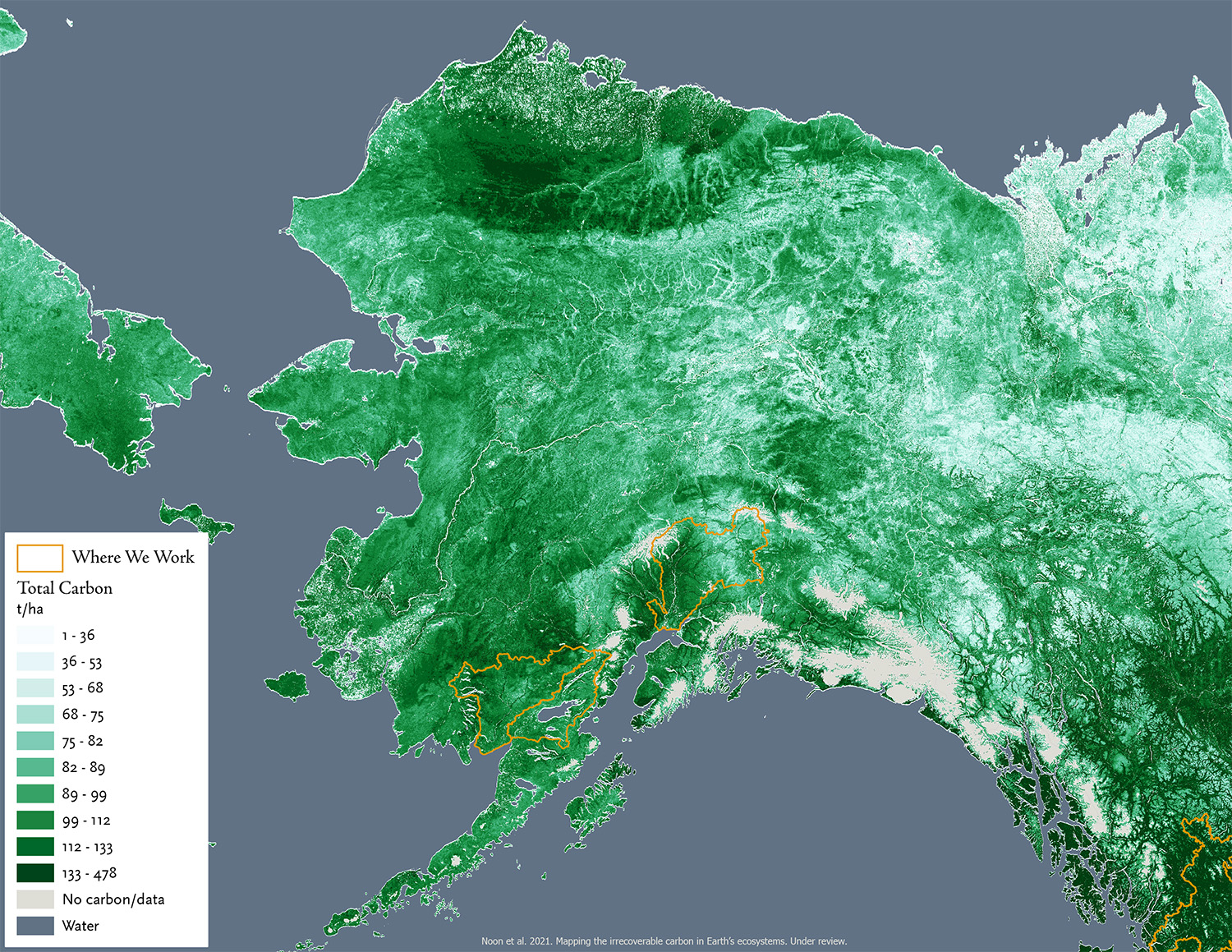The strong overlap between salmon ecosystems and priority lands for carbon sequestration offers an opportunity for new land-based strategies to stop climate change.
As international efforts to reverse climate change gather new urgency, land-based strategies could play a major role. In the United States, improvements in land management could absorb up to a fifth of annual emissions—the equivalent to taking all cars and trucks off the road—according to a 2018 study led by The Nature Conservancy.
Wild Salmon Center is working to harness this tool to protect salmon stronghold ecosystems in two ways: by conserving large natural landscapes that already sequester carbon, and by restoring salmon watersheds in ways that increase their carbon-sequestering abilities.
With our colleagues at Ecotrust, we’re mapping the North Pacific and getting a clearer picture of the strong overlap between salmon ecosystems and priority lands for carbon sequestration. This map is organized into carbon storage categories that represent roughly five equal-sized land distributions. The most important lands for carbon storage—those storing more than 110 tons of carbon per hectare—are marked in deep green.

In Khabarovsk, where WSC’s Russian partners are working to create a network of protected areas for salmon and Siberian taimen, boreal forests and their underlying peatlands represent unusually high carbon storage potential.

Alaska’s Bristol Bay region (anchored by the Nushagak (left) and Kvichak rivers outlined lower left), home to the world’s largest run of sockeye salmon — and the threat of Pebble Mine, is a massive tract of largely undeveloped carbon-absorbing wetlands and peatlands the size of Wisconsin.

The remaining temperate rainforest rivers in coastal Alaska, British Columbia, Washington’s Olympic Peninsula, and the Oregon Coast also offer globally significant carbon storage.
Our goal is to provide policymakers, the philanthropic community, and the carbon finance sector with hard evidence of the clear climate benefits of keeping salmon strongholds intact and safe from large-scale logging, mining, and other destructive development. And that could accelerate increased protections and restoration across the North Pacific, from the Lower 48 to the Russian Far East.
Protecting important salmon watersheds should be part of a land-based climate strategy.
